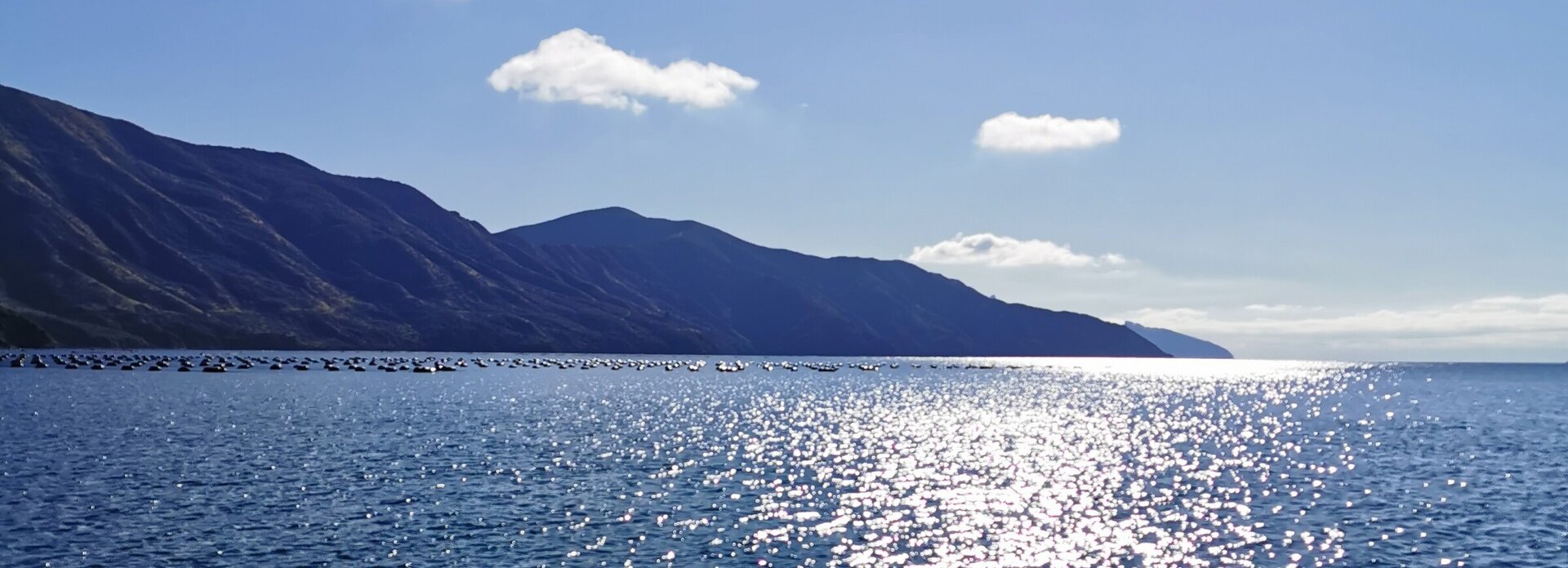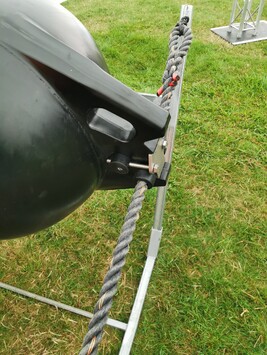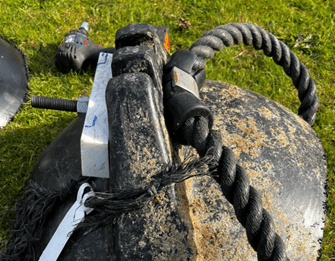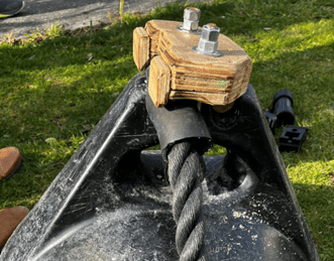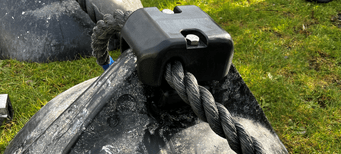Anyone who has been in and around the Marine Farming industry for any period will know how much of a challenge floats can be.
Floats are needed to hold up mussel farms, and as the crop gets heavier more floats are added to the lines to keep the crop from ending up on the seafloor.
Floats are also used for navigational purposes, if you have been out in the Marlborough/Tasman area you will note that we use both black and orange floats, the black ones do most of the work, while the orange floats mark the ends of the lines and the middle of the most inshore and outshore lines for navigation.
Floats have historically been lashed to the backbone ropes on a farm with plastic lashing rope.
One industry goal is continuous improvement in the environmental space and while it might seem like you’re not seeing us do anything, we are focused on this all the time. Floats is a heavy focus for us now.
The issue with the way we currently attach floats, is that if there are some energetic conditions such as storms or high winds, the floats can wriggle loose, loose floats are a navigational hazard, unsightly when they land on beaches and it costs the companies a lot of money (especially at the moment with petrol prices) to take a boat out and retrieve the float and put it back on the line.
With the float issue, there is both industry and community motivation to try and solve this challenge.
The first thing that has happened, two new float attachment systems were developed.
Both floats are now on the market and will roll out gradually, first in the more energetic areas as end floats, then as existing floats need replacing.
Both these float attachment styles were tested in rough conditions and are in use currently, we haven’t seen any fall off yet, which is a fantastic improvement.
The next challenge has been to retro fit all the thousands of existing floats already out on the water as it’s logistically and environmentally not feasible to go out and replace them all.
The MFA held an industry workshop in July and invited, Ops Managers, boat crews, engineers, and anyone else with an interest to attend. The workshop was well attended and there were lots of great ideas that came to the table in the way of prototypes.
The prototypes got workshopped, improvements were made to existing ideas and new ideas were formed.
The biggest challenge with retrofitting is that there are many, different float handles designs on the water and a retrofittable solution needs to work with them all.
Selection of some of the prototypes from the workshop.
The good news is that one design is being progressed after being workshopped, it will need to be tested before going into manufacture, but we are quietly positive that a retrofittable solution will be available for the industry to purchase soon.
With all these new solutions being rolled out we should see a gradual decline in float loss as everyone switches over from lashing to the new designs.
Click on link to see an example of the clamp float being installed - https://www.dropbox.com/s/t4r5...
